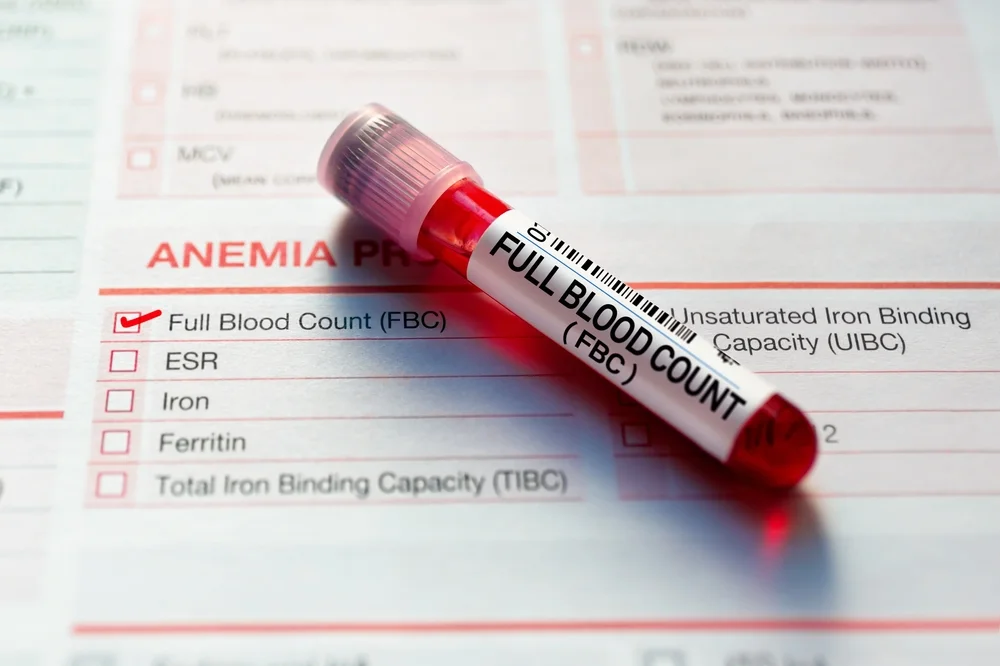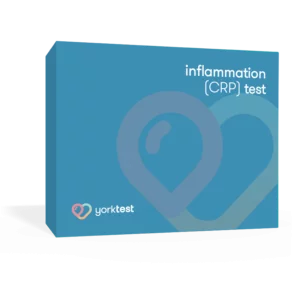A full blood count (or FBC, but also sometimes called a “complete blood count†or “full blood examinationâ€) is a common test that looks at someone’s overall health via their blood. Doctors use it to spot a variety of medical conditions or problems with the body’s immune system. Here, we’ll go over exactly what sort of things an FBC measures, what the results can highlight, and how they’re interpreted.
What is Tested in a Full Blood Count?
A full blood count test is one of the relatively routine blood tests that you’re likely to encounter.
Blood is made up of a variety of cell types that are suspended in a fluid called plasma. The three main components of blood are red blood cells, white blood cells, and platelets. An FBC serves as a broad screening test for all of those and more, and measures a range of components that include:
- Red blood cells – carriers of oxygen.
- White blood cells – fighters of infection.
- Hemoglobin – the protein in red blood cells that carries oxygen.
- Hematocrit – the proportion of red blood cells in the blood.
- Platelets – cell components that help blood clotting.
- Mean cell volume (MCV) – the average size of red blood cells.
- Differential – the types of white blood cells (neutrophils, lymphocytes, etc).
What Does a Full Blood Count Show?
A full blood count test result gives a doctor a wealth of information that can be used to spot disease processes or issues like an infection or a deficiency. It lays down quantitative biomarkers about oxygen delivery, immunity, bleeding/clotting capacity and more. By looking at increases and decreases in cell counts, a full blood count blood test can be used to:
- Uncover a variety of health conditions including anaemia, infection and leukaemia.
- Discover what’s causing symptoms like fatigue, fever, pain, swelling, and bleeding.
- Monitor the impact of conditions that can affect blood cell counts.
- Monitor the impact of treatments that can affect blood cell counts.
- Count other cell types – like reticulocytes and basophils – that can indicate issues with bone marrow or organs like the spleen.
Does a Full Blood Count Detect Diabetes?
On its own, a full blood count blood test doesn’t detect diabetes. This is because it doesn’t measure blood sugar levels or factors that are specifically relevant to diabetes. Definitive diabetes testing needs to measure plasma glucose levels through an A1c test, by fasting blood glucose, or by using glucose tolerance tests.
However, an FBC can highlight red blood cell abnormalities that may develop as a consequence of poorly-controlled diabetes. For instance, Anaemia can occur if the high blood sugar of a diabetic causes kidney problems, and anaemia can be spotted by an FBC. Likewise, severe diabetes can sometimes lessen insulin levels to the point that red blood cell count is affected; an FBC will detect that. Therefore, doctors can sometimes discover the presence of diabetes if an FBC first detects some of these indirect blood cell irregularities.
What is a Full Blood Count Normal Range?
The specific ranges of normality for an FBC can vary between laboratories, and even differ based on ethnicity. However, some of the normal ranges include:
- Red Blood Cell
4.35-5.65 trillion cells/L for a male, and 3.92- 5.13 trillion cells/L for a female. - Haemoglobin
13.2-16.6 grams/dL (132- 166 grams/L) for a male, and 11.6-15 grams/dL (116-150 grams/L) for a female. - Hematocrit
38.3-48.6% for a male, and 35.5-44.9% for a female. - White Blood Cell
3.4-9.6 billion cells/L. - Platelet
135-317 billion/L for a male, and 157-371 billion/L for a female.
What Does it Mean if Your Full Blood Count is Abnormal?
An abnormal result on a full blood count blood test can indicate many things. Some examples of what you can learn from variations in cell counts include:
- A low number of red blood cells can indicate a condition like anaemia, or an elevated count can indicate polycythemia.
- Low levels of haemoglobin can indicate the presence of anaemia.
- Low Hematocrit can indicate the presence of anaemia.
- Low or high white blood cell counts can suggest something like an infection, inflammation, or blood disorder.
- A low platelet count is the cause of thrombocytopenia, which hampers clotting, whereas high levels can increase the risk of clots.
- Abnormal mean cell volume (i.e. size variations) can indicate a condition like a nutrient deficiency or anaemia.
- An abnormal differential can indicate infection or a condition like leukaemia.
How Long Do Blood Test Results Take?
Blood tests need to be closely examined, or sometimes checked with chemicals. Some blood test results may theoretically be ready and back with your doctor on the same day as they’re taken. Others can take days or even weeks to be returned. Something like our Annual Health Test includes a full blood count as standard, and you’ll have access to the online test results from that within just 7 days.













